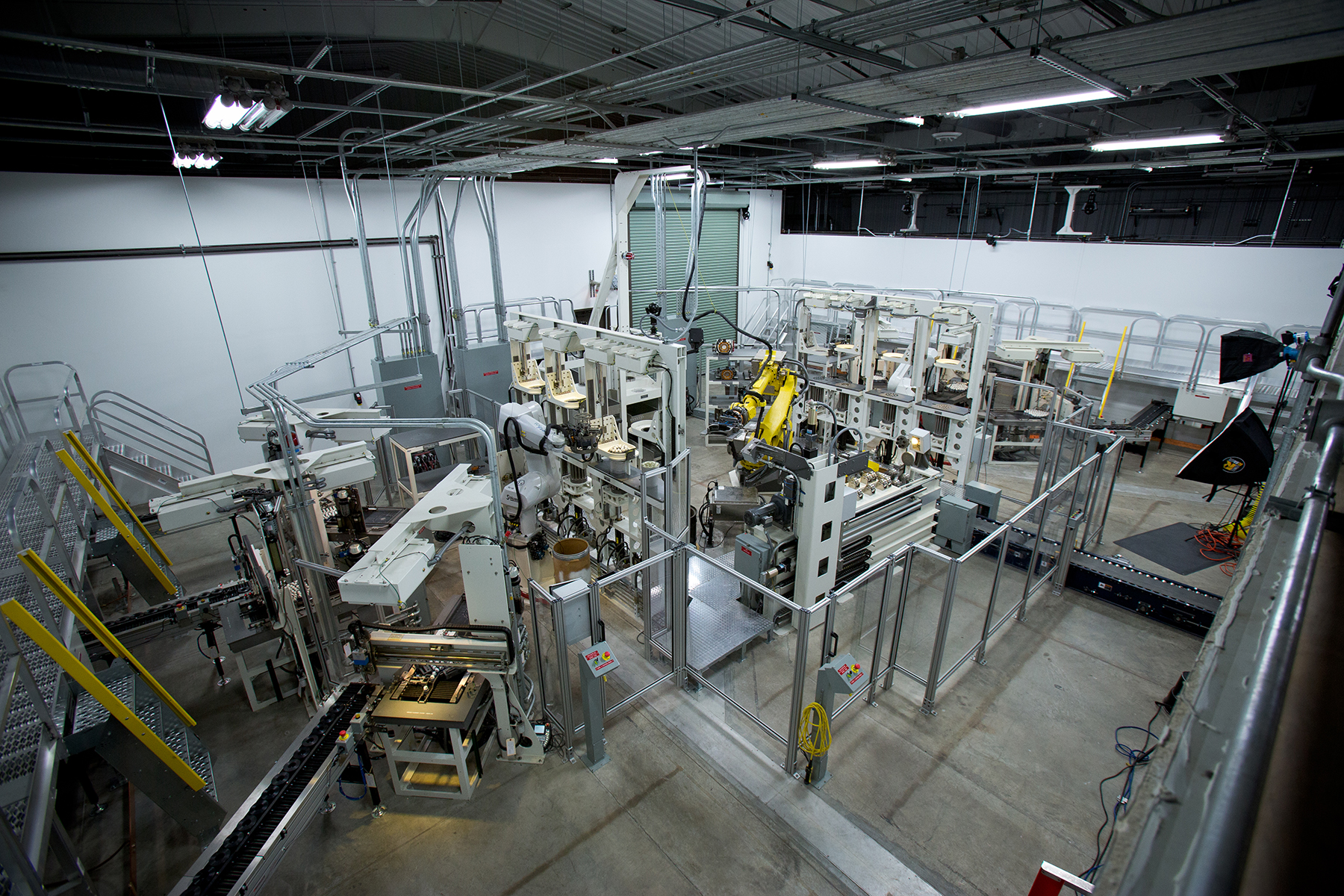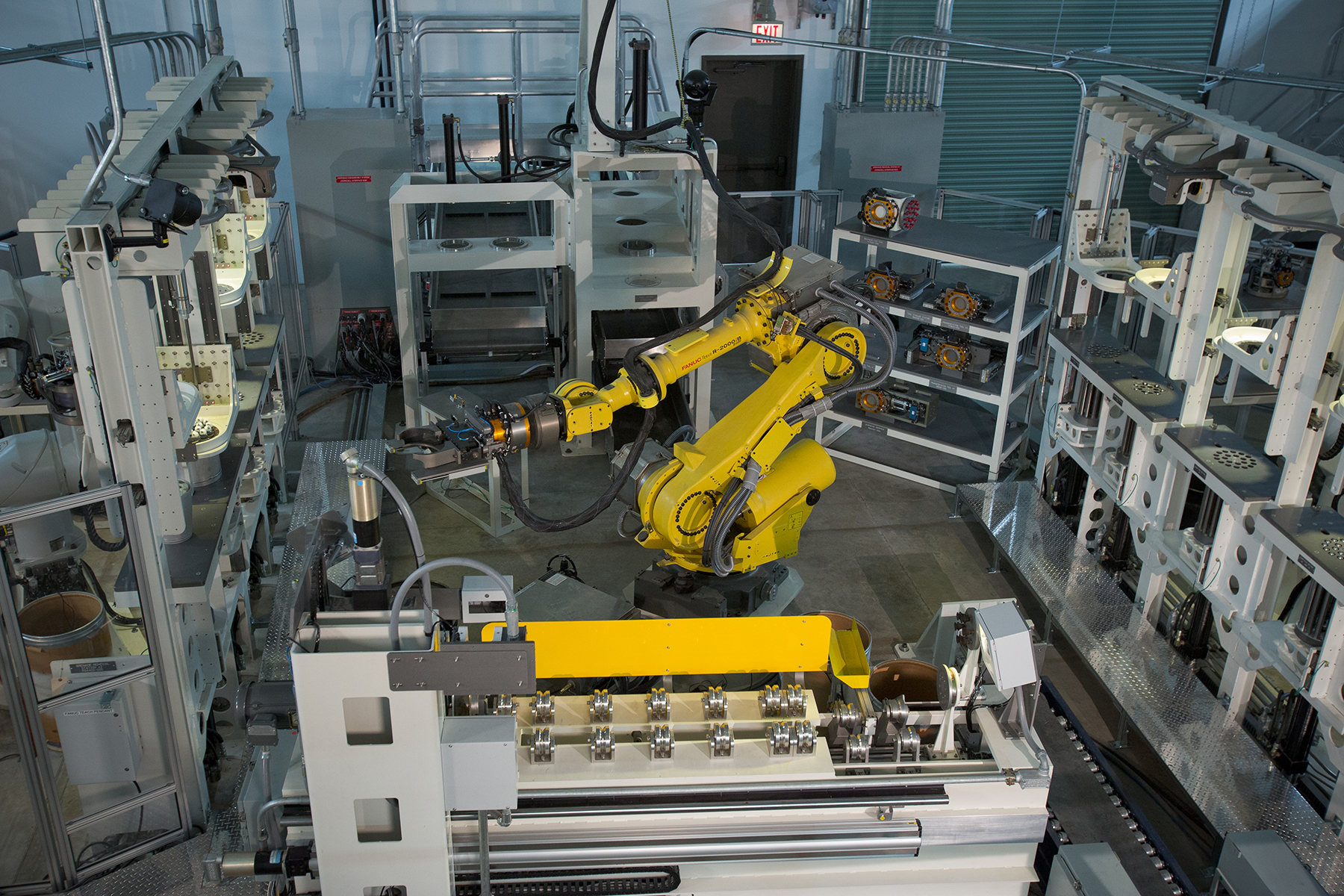ALBUQUERQUE, N.M. — More than 700,000 Multiple Launch Rocket System submunitions have been demilitarized since the Army started using an automated nine-robot system conceptualized, built and programmed by Sandia National Laboratories engineers.
“This is by far the most complex, automated robotic demilitarization system that Sandia has built in the last 20 years,” said computer scientist Bill Prentice, Sandia software lead for the project. “This is exactly the kind of thing to use robotics for — to get humans out of harm’s way. Let the automation of robots do what they do well, and have humans make advanced decisions on safety.”

The automated system, owned by the Army, is located at the Anniston Munitions Center’s Multiple Launch Rocket System Recycle Facility in Alabama. The system was built for the Army’s demilitarization program that aims to dismantle obsolete ammunition and missiles. The project was funded and managed through the Department of Defense.
The system safely reduces the stockpile of Multiple Launch Rocket System munitions that have been in storage and it enables the Army to recycle rocket materials — capabilities that did not exist. The Army can now recycle the rockets’ aluminum warhead skin, steel grenade bodies and copper.
Speeding up the process of demilitarization also reduces costs. The automated robotic system is designed to demilitarize up to 21 warheads per eight-hour shift.
“We were able to remove people from a potentially very dangerous situation and created something that allowed products to be recycled and reused, which is what the DOD demilitarization program is about,” said project lead Walt Wapman, a mechanical engineer.
Humans still oversee operations, learn to run the advanced robotics system and watch the process on live feeds in a control room. Computer vision, which is a form of artificial intelligence using digital images from cameras, can detect abnormalities during the demilitarization process and alert operators who determine if there is a safety concern.
How the system works
All system robots are commercial-off-the-shelf robots that were customized and programmed by Sandia engineers to do specific tasks.
“There are 644 grenades per warhead, and our job is to take these tightly-packed, columnated grenades in the warhead foam packs and demilitarize them,” Prentice said.

The system is organized into nine “cells.” The first cell is the weapons disassembly system where warheads are cut into separate foam pack sections. The foam packs filled with grenades are then delivered to cells two and three where the grenades are removed from the foam packs. From there, individual grenades are delivered to cells four through nine where the fuses are detached. Once the fuses are detached, the munitions have been disarmed.
The system can pick up and place foam packs and grenades in precise orientations, and lock and rotate the grenades to examine and remove fuses in a safe way, Prentice said.
For more than three years, Prentice said he put his heart and soul into the robotic system. He and a small team used three computer languages to program the nine robot cells, tested the system and traveled back and forth to Alabama while the robotic work cells were assembled and tested.
“Part of the challenge is when you demilitarize warheads like this, you’re working on munitions that are 10, 20, 30 years old,” Prentice said. “You test on inert munitions that are in pristine condition, but when you start cutting apart warheads and looking at live grenades, they might have some environmental effects that cause process abnormalities, such as grenades being stuck together during removal.”
System part of Sandia’s long robotics history
Prentice said Sandia has been involved in robotics for more than 20 years and the demilitarization business for at least 18 years. Wapman led the demilitarization program at Sandia for most of that time.
“I’d say that what Sandia really brought to the table was an integrated, small team that took a blank sheet of paper and made a nine-robot automated system with 55 cameras, hundreds of sensors and a lot of exceptional designs, enabling us to deliver a reliable system to the Army that’s been safe,” Wapman said.